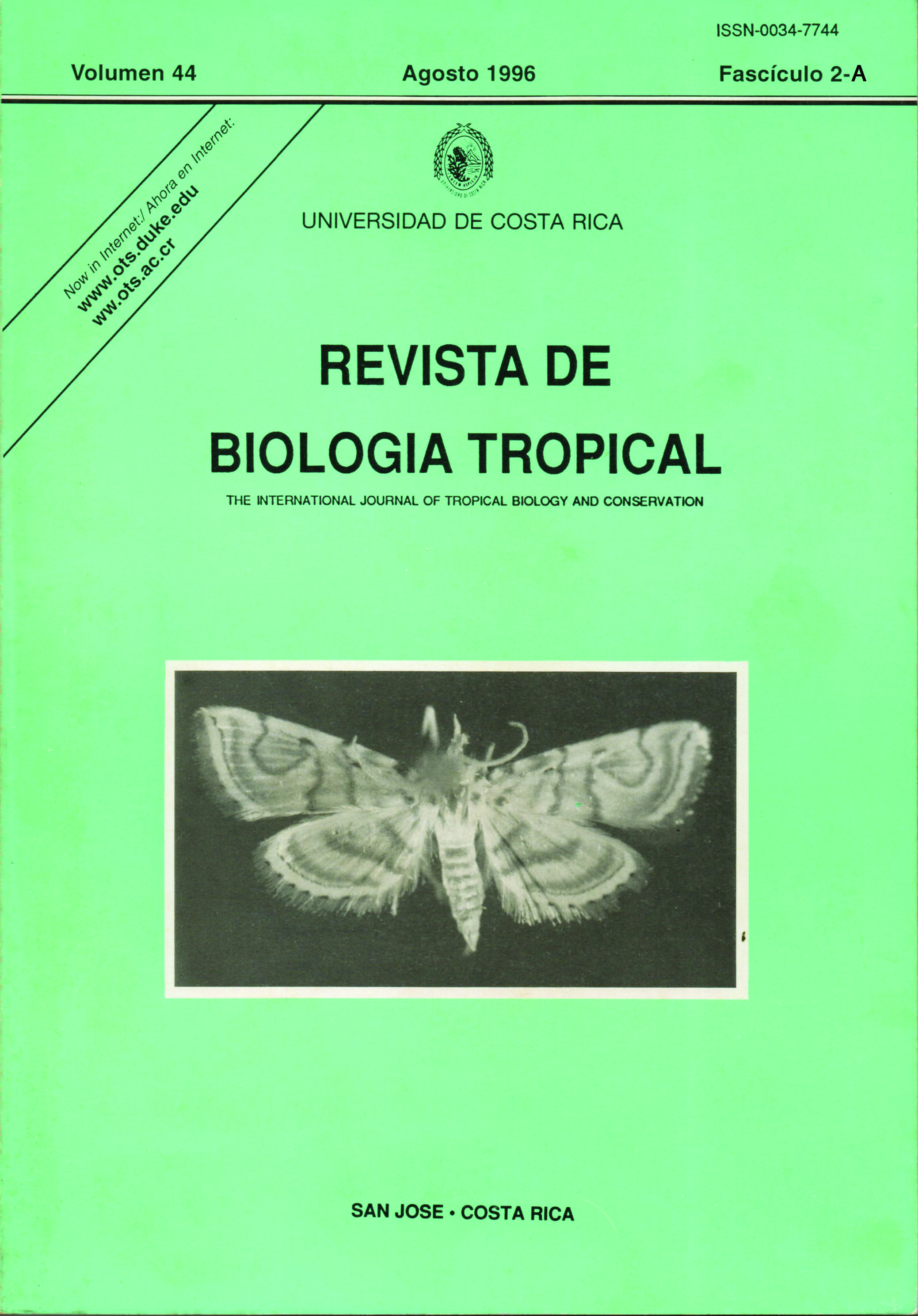Abstract
The zooplankton distribution, abundance and composition at Cahuita coral reef (Cahuita National Park, 9° 45' N and 82° 49 'W, Costa Rica) were studied in four stations from January to November 1984. The samples were collected monthly using a net witb 0.47m diameter opening and 280J.lm mesh. Copepods were predominant tbroughout tbe year (32-95%), followed by foraminiferans (1-34%), fish larvae and eggs «1-28%), crustacean larvae (2-13.8%) and chaetognatba (1- 6.5%). Mollusc and echinoderm larvae were also presento High densities of zooplankton were obtained in January, August and October, with peak abundance in May. Low densities were found in April and November. Sorne groups like Copepoda, Chaetognatha, crustacean larvae and Polychaeta showed significant differenees in tbeir abundanees from station to station. Amphipoda, Urochordata, mollusc and echinoderm larvae as well as ichtbyoplankton showed no such differences. Comparing tbe rainy and dry season, a significant difference,-Was detected between holo- and merozooplankton abundanees; holozooplankton population dominated botb in number and diversity. The lower diversity of larval forms is assumed to be a result of strong sedimentation and sediment resuspension. The variability of zooplankton abundance and its distribution are influenced by tbe current system tbat predominates in Cahuita. Qualitative analysis suggests tbat too zooplankton sampled in tbe Cahuita coral reef corresponds more lo pelagic-oeeanic zooplankton than to demersal zooplankton. Differenees between the sampling sations may reflect tbe intensity of exchange between tbe reef water and surrounding water.
This work is licensed under a Creative Commons Attribution 4.0 International License.
Copyright (c) 1996 Revista de Biología Tropical

